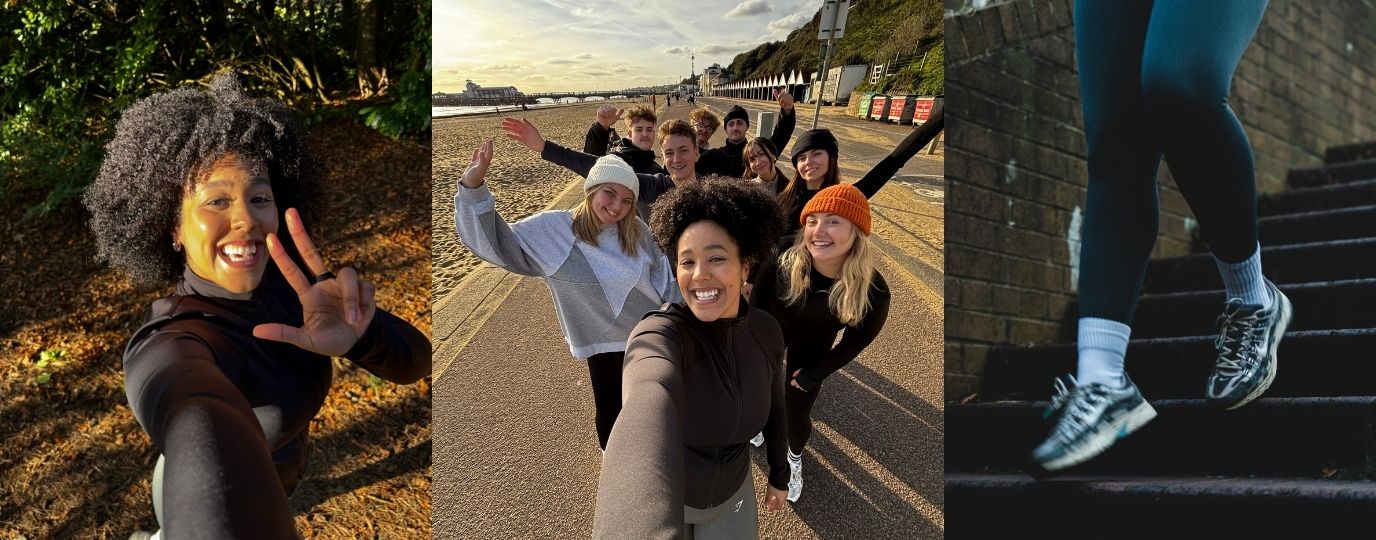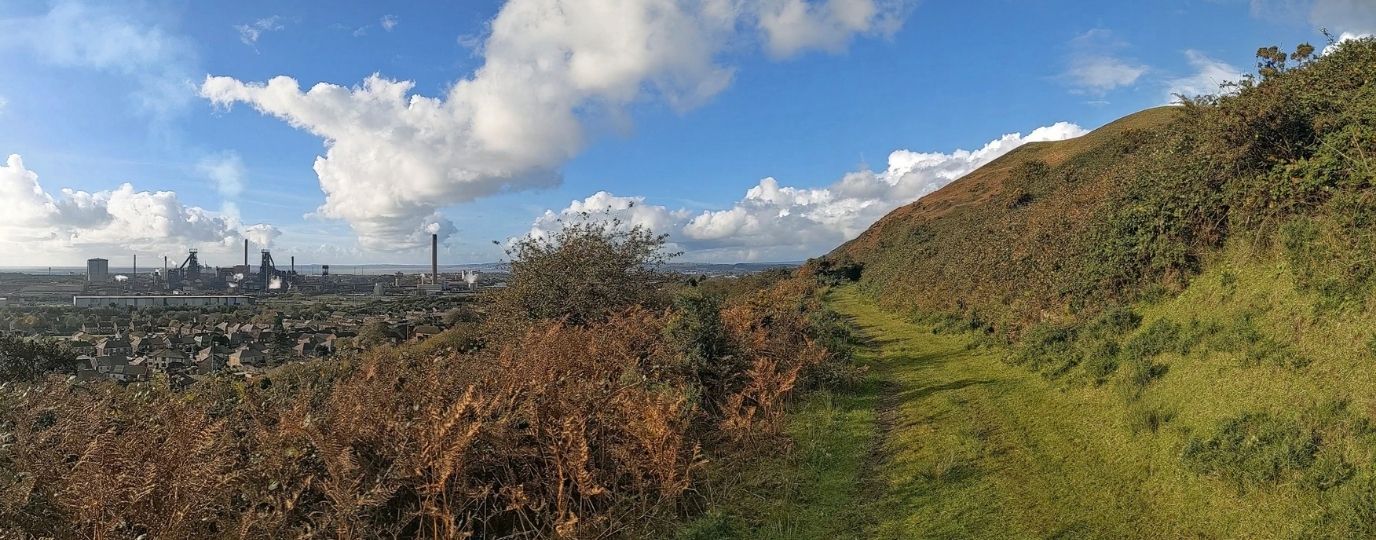For your muddy walks
It’s that time of year when many of your favourite paths can turn into a quagmire. Here are some top tips on how to deal with walking in mud and how to plan a walking route that may avoid it.
Mud is pretty much inevitable if you are walking in Britain in Winter. Or spring, autumn or summer, for that matter. You don’t want to abandon a planned route, so how can you deal with the prospect of mud before, during and after a walk?
Plan your route
A lot of this comes down to local knowledge, as it’s really dependant on things like soil drainage. You cannot assume a higher altitude trail will be free from mud, or that areas with no streams will be dry. Cycle trails, especially traffic-free cycle routes (shown as orange dots) are often much dryer with hard surfaces, as are trails on closed railway lines, easily spotted by the cuttings and how straight they are.
Most routes on white roads or tracks are generally mud-free, although any that are popular for greenlaning (off-road driving) can be almost impassable!
Naturally, if it’s not rained for some time, it’s a lot more likely to be dry. A few cold days often means mud patches are frozen solid, making it much easier and faster to take on otherwise difficult routes.
Be especially careful of tidal areas, and pay attention to warning signs. Mud here can be very deep, capable of trapping even adults, plus it can slow you enough to be cut off by incoming tides. Stick to well-marked trails in these areas, unless you are with someone who knows them really well.
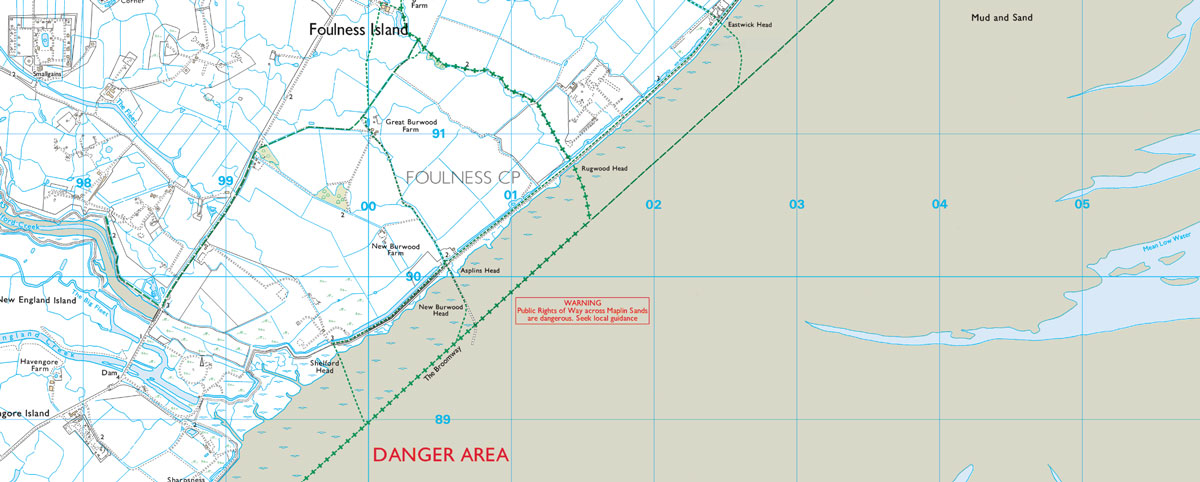
The path near Foulness is known for treacherous mud and sands, and it’s recommended you only walk it with an expert
Be prepared
Clearly, footwear is critical. You need to look for three things: height, grip and waterproofing. A boot that covers further up the ankle is clearly going to provide better protection than a trail shoe. Even for low-level walks, I tend to go for taller boots in winter or when I expect mud.
Grip is also important – look for deep lugs to grip even in slippery clay muds, and choose footwear with a slight heel as this provides extra traction on downhill slopes.
Waterproof boots are going to be vital. My preference is polished leather, rather than suede or fabric with a waterproof membrane. Although they tend to be a bit heavier (and more expensive), leather is far easier to clean. Wellingtons are good choice for shorter walks, but tend to get uncomfortable after a while – however, there are newer ones coming out designed for better fit and comfort.
You can also look at gaiters. These will keep your trousers clean (and drier), which will make them more comfortable, but will not help if the mud is deeper than your boots, as it will get in the join. I generally only bother if I’m also expecting to be walking in wet vegetation, but some people like them for their ability to stop stones and grit getting in your footwear.
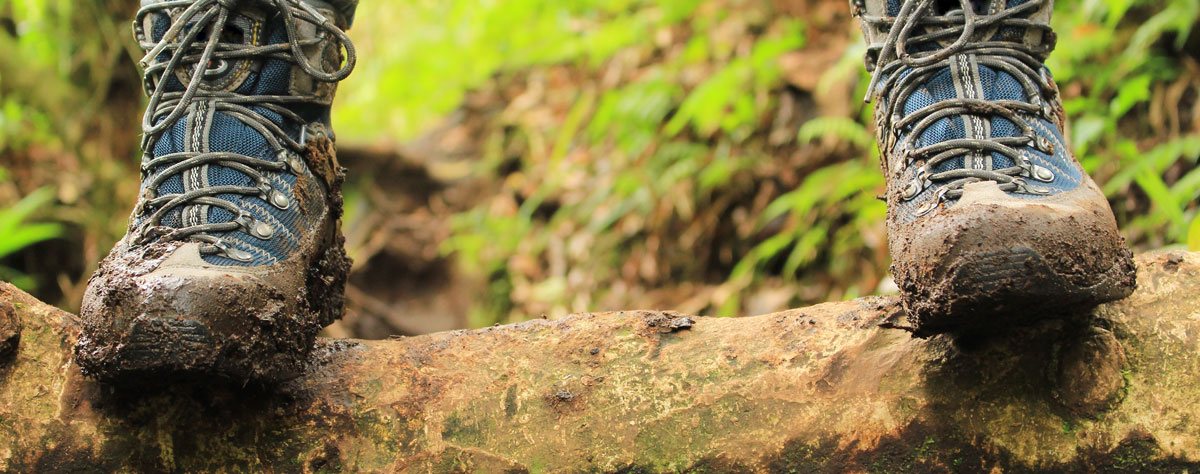
Lastly, be careful with slip-on shoes and boots along with wellingtons. They tend to slip off, leaving you standing on one leg desperately trying not to put your foot back down. Laced boots, or at least those with an ankle strap, are more secure.
One option, especially on beaches, is to take off your boots and socks, roll up your trousers and go barefoot – feet are a lot easier to clean than shoes if you have access to the sea, a stream or a tap! Just be careful of sharp stones and shells. Some people use lightweight camp shoes, like beach shoes, but in my experience these tend to just get pulled off and lost.
Walking
If you can, avoid the worst spots by picking around it. However, be aware of staying on the path or trail. Especially in wet conditions, even a few people walking off the trail can damage the vegetation or ground, wearing a new track or widening existing ones. Check your OS Map or OS Maps app to ensure you are still on the correct path.
Surface mud is actually more dangerous than deeper mud – especially when it appears as a thin layer on top of rock it can be incredibly slippery. Like walking on ice, keep your pace shorter, your feet low and pace steady. Avoid sudden changes in direction or speed. If possible, keep your legs slightly relaxed to cope with any sudden slips.
Downhill slopes are normally trickier, and more dangerous if you slip. If you have a walking pole, use it for extra support, and slow down further. Foot placement will be critical – if you can see any small outcrops of rock, level sections or places the mud has not formed, try to use those.
Deeper mud presents different challenges. Test the depth with a walking pole or handy stick, if you can. If it’s deeper than the height of your boots, try to avoid it if at all possible. Take each step slowly, ensuring you can free your rear foot before committing, as otherwise you can be off-balance – falling over in deep mud is not fun!
Place your foot slowly, toe first. Try to avoid placing your foot entirely flat, as it tends to increase suction and make it harder to lift again. When lifting a foot, try to lift the heel first to break the suction, especially if you are getting stuck.
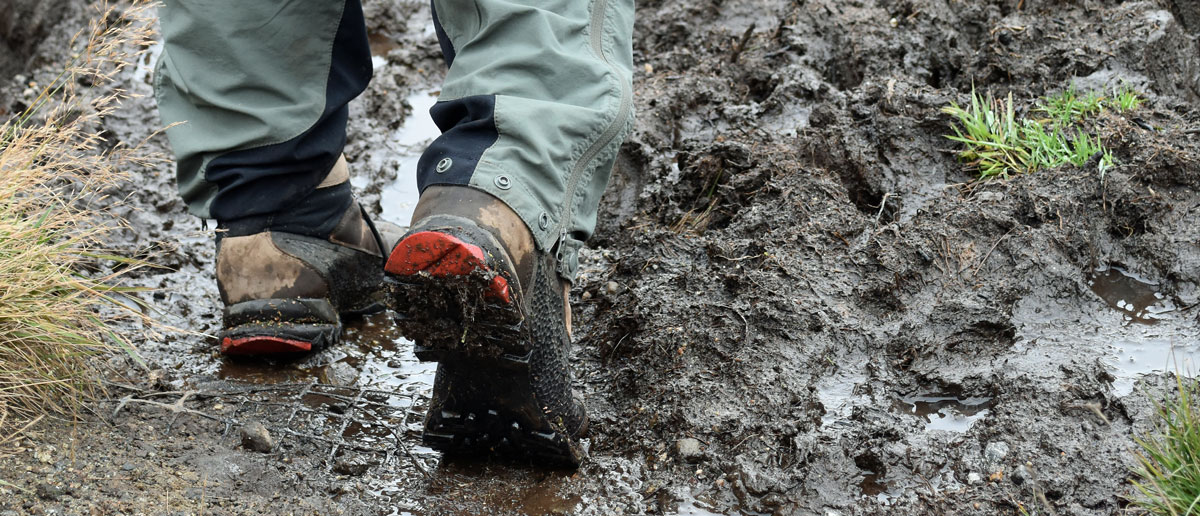
If you are heavier, you are going to sink further into mud than someone lighter and be harder to pull out – if you are in a group, send someone lighter first, if possible. Also try to avoid standing in one place too long, especially in bog areas. You may find yourself steadily getting deeper until it becomes really hard to extract yourself.
Shallower spots are often visible from vegetation or rock showing above the mud, while you may find a steam bed is shallower and more solid than the banks. Fallen logs can also provide a useful walkway, but be careful of slipping – the extra impact might push a foot in too deep to extract.
The aftermath
You will have muddy boots when you get back. You will probably have muddy trousers, and, since it does tend to get everywhere, muddy jackets, bags and everything else too.
A change of clothes is a really good idea. A spare plastic bag for clothes and boots will keep car seats or your other gear clean. Keep a towel handy (you can get lightweight travel towels ideal for walkers) for taking off the worst of the mud, or for sitting on if someone went in.
Boots
It’s easier to get mud off before it fully dries, if possible. Knock off any large lumps, then use a brush (an old shoe brush or soft scrubbing brush) to scrub with a little cold or warm water. Try to avoid soaking the boots, especially if they are leather. Fabric boots may show stains; you can buy cleaning gel specifically for shoes. Avoid using a detergent that’s not designed for waterproof materials.
Pay careful attention to bits under the tongue and in lacing eyelets – you may want to remove the laces altogether and wash them separately.
Now, dry them. Don’t place them of top of a radiator or really close to a fire, as they may dry too fast and crack or melt. Somewhere warm with a bit of ventilation is ideal – at home I tend to have mine just in the hallway. Avoid cupboards or other spots with no airflow – you might find they go mouldy. Putting some crumpled newspaper inside can help draw the moisture out quicker if they are wet inside.
You may want to reproof your boots every few outings. Choose one suitable for the boot material, and check the instructions for application. Leather boots can be simply polished, but dubbin is better and lasts longer.
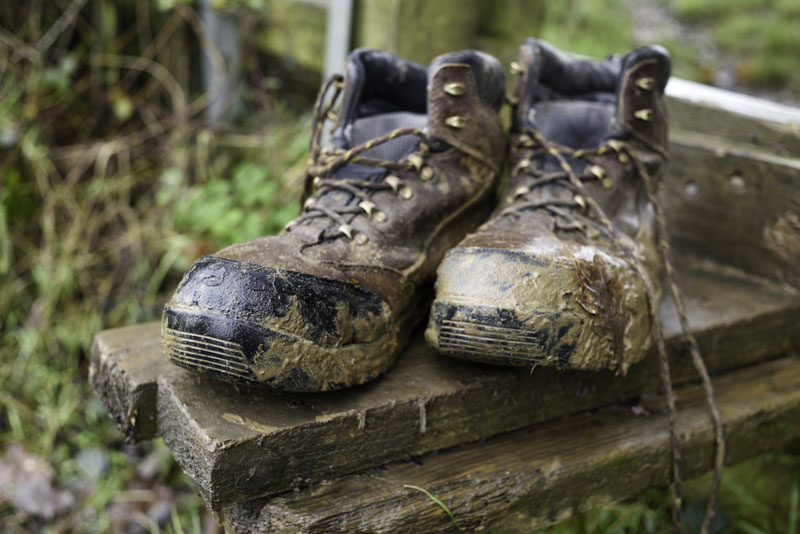
Muddy boots are easier to clean while still wet
Jackets, trousers and more
For waterproofs, much of the time, you can simply wipe mud off with a damp cloth. If it’s especially bad, you need to follow the instructions on the clothing. Many waterproof items need careful care and specific products to maintain the proofing, so don’t just chuck them in the wash with normal detergent.
After or during washing you will normally need to re-proof them. This can either be done by adding something to the wash, or by using a spray.
Non waterproof clothing can be washed as normal. Remove any large bits of mud first to prevent it blocking the washing machine filter or drains.
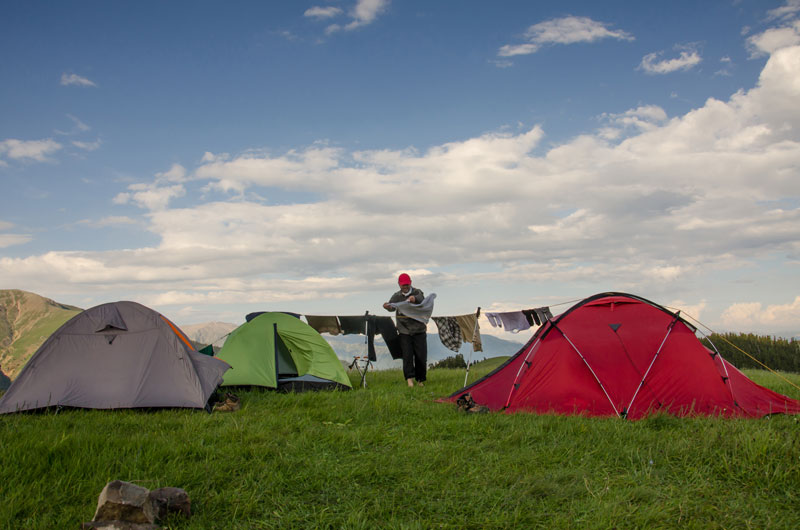
Drying muddy clothes at the camp site
Dogs
You’ll need to bring several towels or blankets to get off the worst of the mud and keep the seats or boot dry. It’s quite likely long-haired breeds will need a bath at the end of a muddy walk, while short-haired ones might only need a wipe down.
To stop them trailing mud around before they are cleaned, use a damp cloth or wet wipes to clean paws first. Check between their toes and pads.
If you are doing a lot of muddy walks, keeping fur on legs and tummies trimmed will help reduce the amount of mud collected. You might also consider a jacket that covers the chest and tummy to reduce the amount of washing required. For the car or house have a look at Vet Bed (or similar) which is designed to absorb water and trap dirt.

Muddy, but still good dogs
A bit of mud (or even a lot of mud) does not have to stop you getting outside. So go on – get a little bit dirty!

